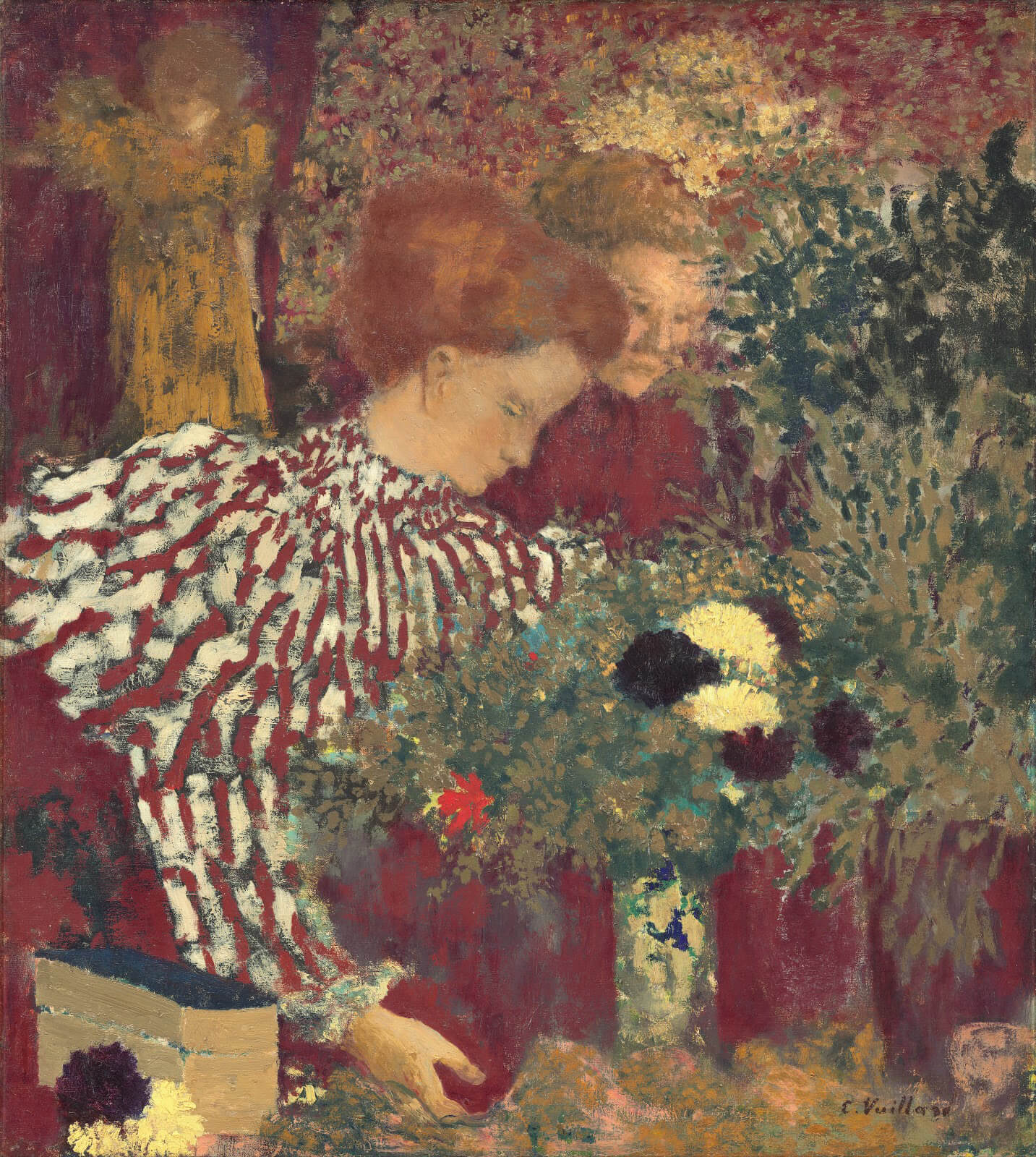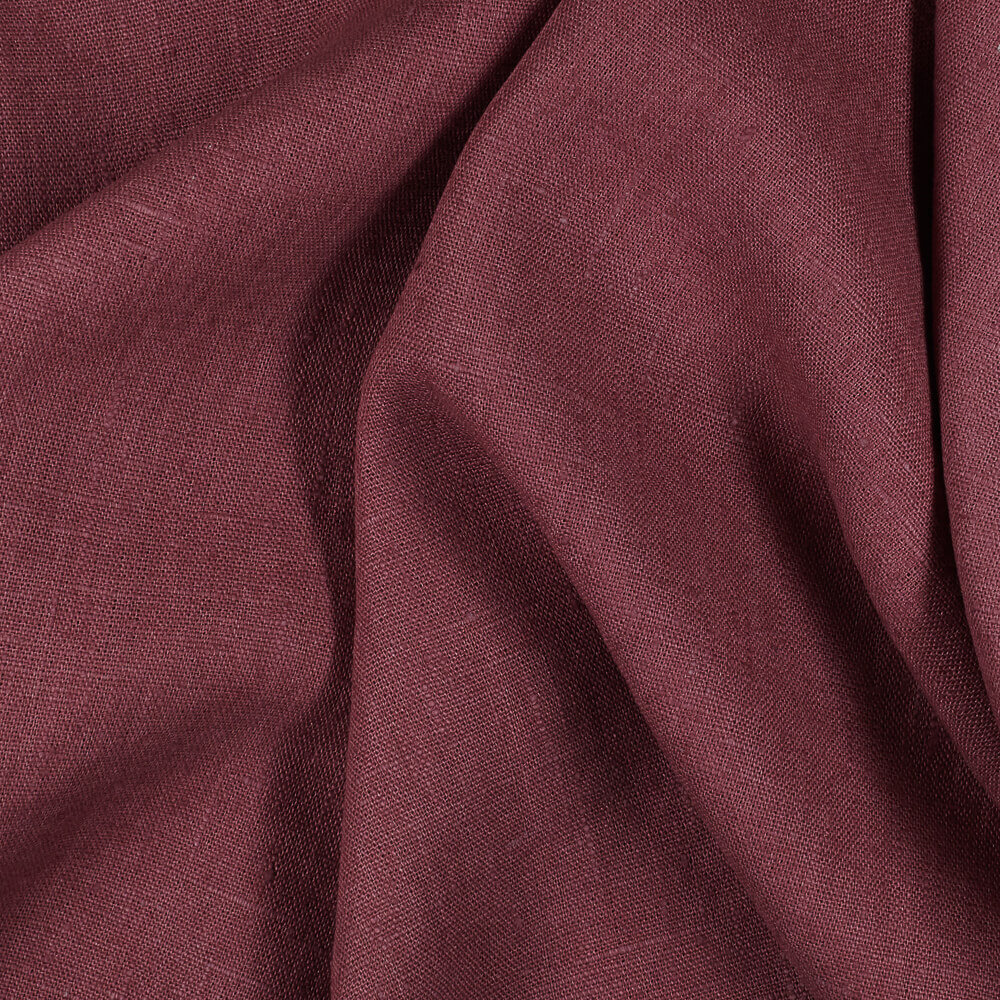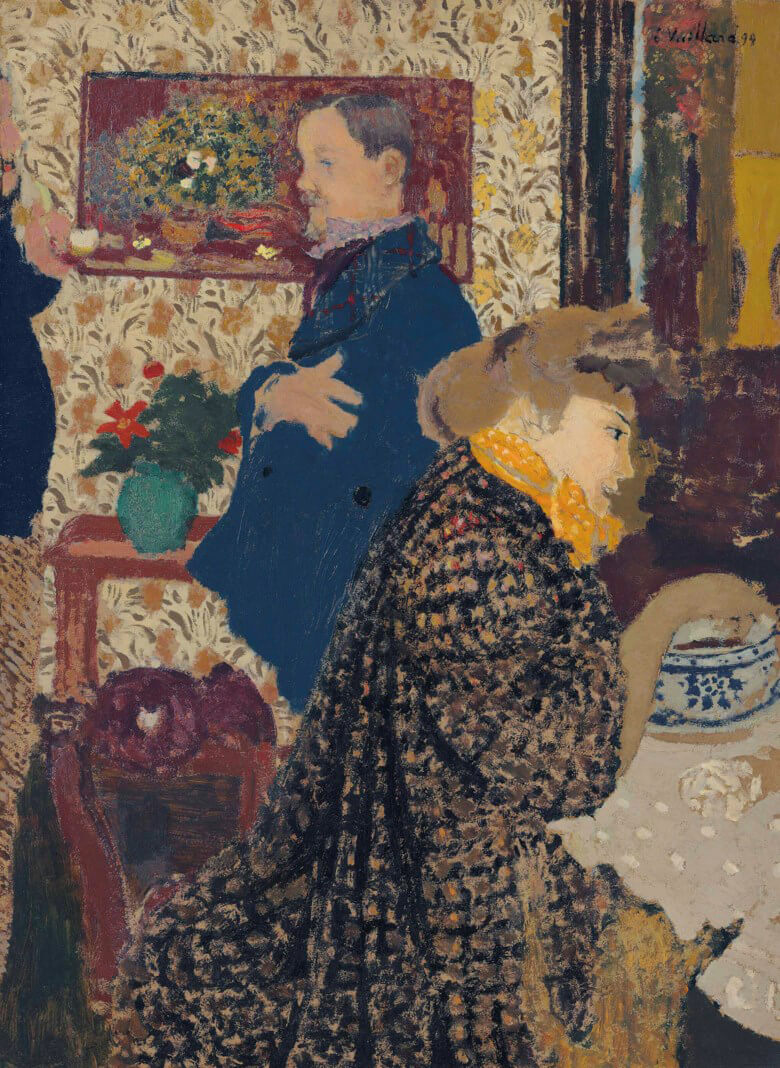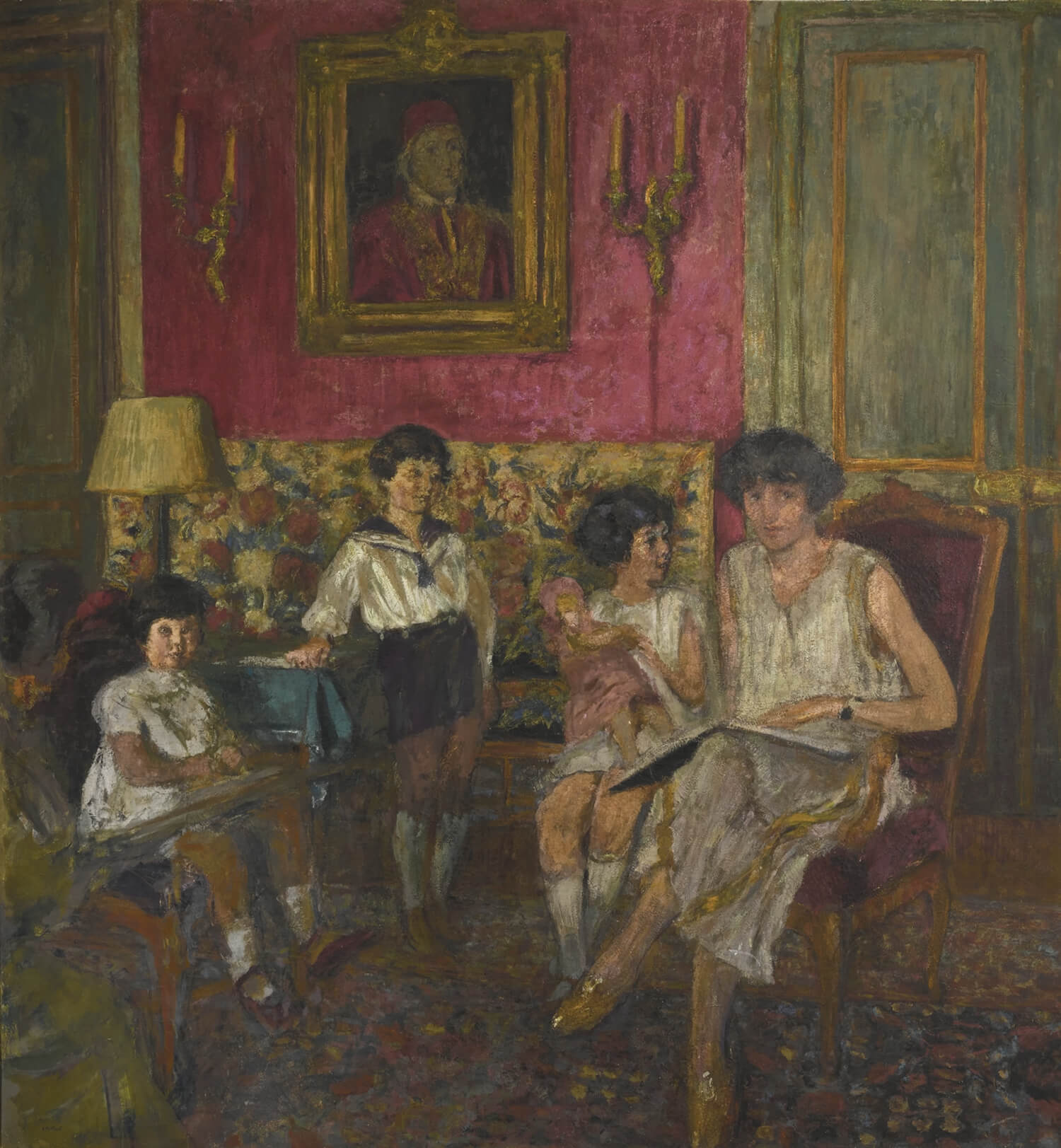FS Colour Series: Red Lilac Inspired by Edouard Vuillard’s Indulgent Plum
Indulgent shades of crimson and plum like Red Lilac were a recurring feature in the work of French intimiste painter Edouard Vuillard, depicting the lavish interiors and elaborately dressed women that set the stage for his life in late 19th and early 20th century Paris. Predominantly a painter of quiet, intimate indoor scenes brimming with decorative patterns and surfaces, Vuillard’s colour schemes leaned towards naturalistic shades, infusing his art with an enveloping quality of familial warmth, perhaps unsurprising given he lived most of his life in the same city, much of this time in close quarters with his mother, a dressmaker. He said, “I don’t make portraits, I paint people in their homes.”
Born in 1868 in Cuiseaux, (in the Bourgogne region of France), Vuillard moved with his family to Paris in 1877. He was schooled at the Lycée Condorcet, and later trained with the artist Diogene Maillart, followed by longer periods of study in fine art at the Académie Julian and the Académie des Beaux Arts in Paris. During this time Vuillard befriended Pierre Bonnard, Paul Sérusier, and Felix Vallotton, who would become founding members of the art group The Nabis. The collective took their name from the Hebrew word for ‘prophet’, and saw themselves as non-academic painters who focused on the spiritual and emotive properties of colour and mark-making.
While Vuillard’s early work demonstrated his academic training, with tight, technical precision, and naturalistic colours, over time his work became increasingly experimental, toying with a balance between impressionistic brush strokes and areas of bold, flattened colour, as influenced by the infiltration of Japanese woodblock prints across much of Europe. By the 1890s his predominant subject matter was women in interiors, painted with intricate, decorative patterns and subdued, muted colours.
Often, as seen in Woman in a Striped Dress, 1895, Vuillard painted figures that seem to merge into one with their surroundings, lending his art a dreamy, mystical and otherworldly quality. In this work, his main subject’s burgundy striped dress seems to fan outwards and become intertwined with the deep plum coloured background, which is scattered with an abundant array of flowers that spill out and fill the surrounding room with fragrant life.
Misia and Vallotton in Villeneuve, 1899 toys with a similar interplay of clashing decorative patterns, as wallpaper, clothing, and paintings hung on the wall all jostle together in an appealingly busy melange that seems to capture the lively, bustling atmosphere of the social scene. He couples warm shades of sand, beige, and ochre with scattered streaks of deep crimson red, complimented by the man’s flat, royal blue jacket in the centre.
Towards the latter part of his career Vuillard’s painting style shifted from impressionistic abstraction to greater levels of precision and realism. However, he continued to focus on sitters within interior space, this time painted as if set within a shallow box, with carefully observed perspectival space and cast light. In Yvonne Printemps in the Chair, 1921, Vuillard pays close attention to detail, painting his model reclining into a high-backed chair in sumptuous clothing. All around her Vuillard’s trademark clashing botanical patterns fill the scene with energy, spreading from the upholstery outwards into the plum-coloured walls and carpet beyond.
Madame Jean Bloch and Her Children, 1927-9 shares a similar colour scheme, with dark raspberry tinged walls that lend a rich, enclosing warmth to the family scene, particularly when scattered with passages of shimmering gold. This colour scheme, coupled with the family’s crisp, pressed white clothing, conveys the family’s wealth with a quiet, understated subtlety. Meanwhile, Vuillard’s trademark lively, floral patterns in beige, plum, and gold are scattered across the carpet and furniture, a nod towards his enduring obsession with how decorative surfaces can bring life and vitality to the most sedate interior scenes.












































Leave a comment